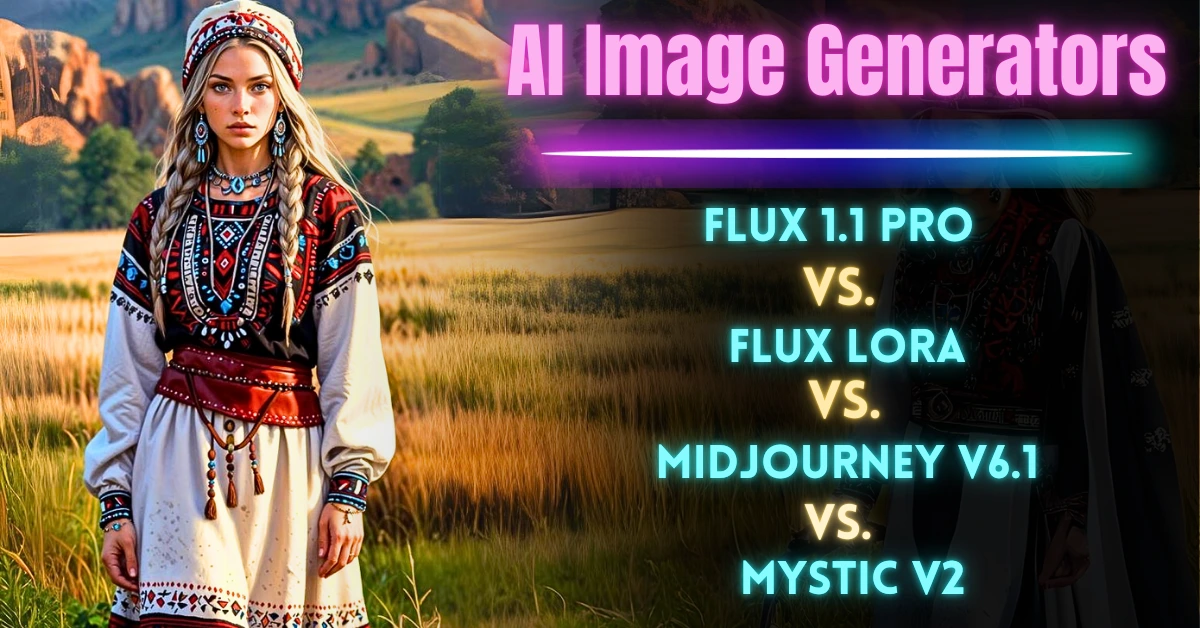In this article, we’ll walk through a detailed comparison of four popular AI image generation models: FLUX 1.1 Pro, FLUX LORA, MidJourney V6.1, and Mystic V2. I’ll break down their performance in several categories, including prompt understanding, photo realism, accuracy of details, and illustrative art.
We’ll also explore the strengths and weaknesses of each model.
Introduction to FLUX 1.1 Pro
Recently, FLUX 1.1 Pro was released, and it immediately drew attention in the image generation community. Initially, a new mysterious model known as “Blueberry” surfaced in various discussions, performing exceptionally well against competitors.
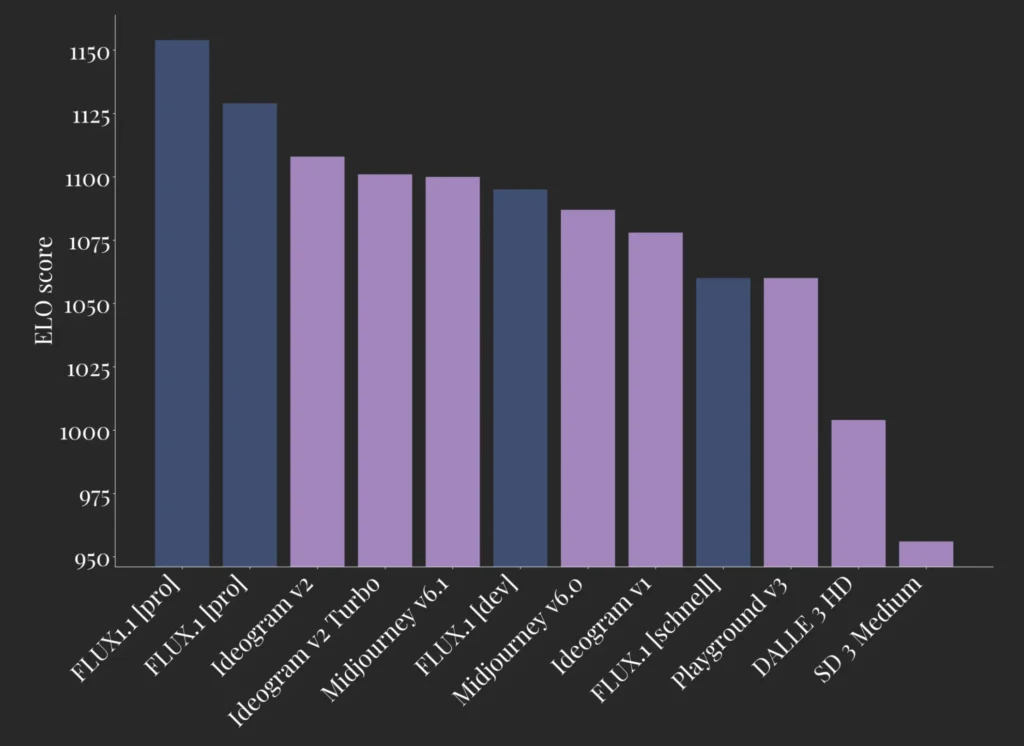
Speculation grew, and eventually, it was revealed that Blueberry was, in fact, FLUX 1.1 Pro.
This model was marketed as faster, more efficient, and with better overall quality than its predecessor, FLUX 1.0 Pro.
Additionally, its speed has tripled, with improved generation times and reduced latency, making it one of the fastest models available.
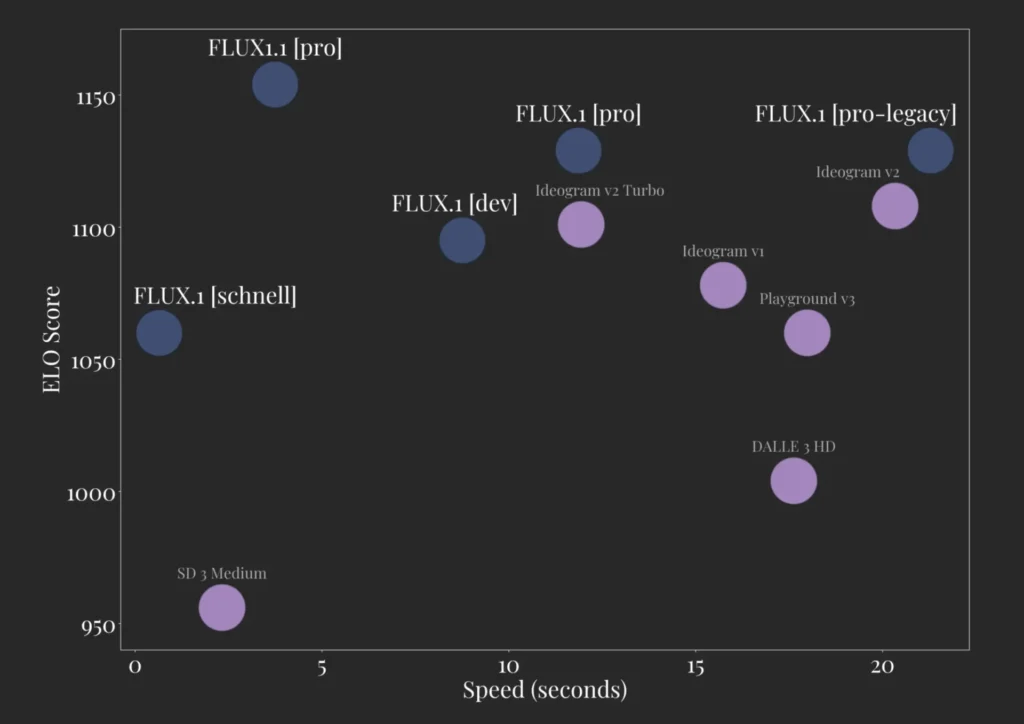
Initial Testing with FLUX 1.1
To kick things off, I ran a prompt: “Cinematic photo of a biomorphic robot in lizard shape, perfectly adapted to the environment with detailed textures and intricate biotech details.”
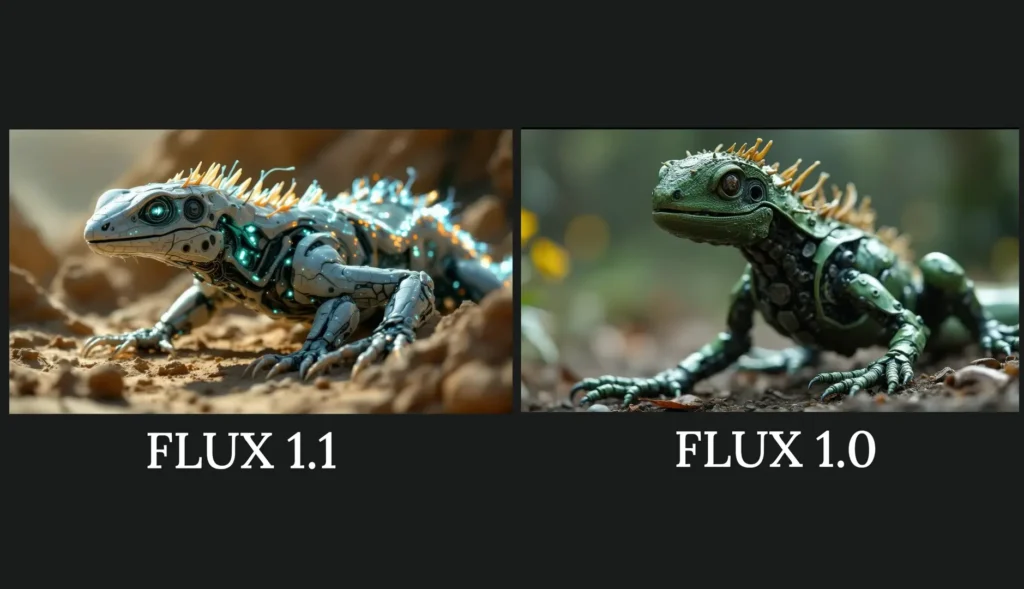
The generation time was about 20 seconds, which is impressive.
The result was visually stunning, but there was a slight issue with the robot’s arms.
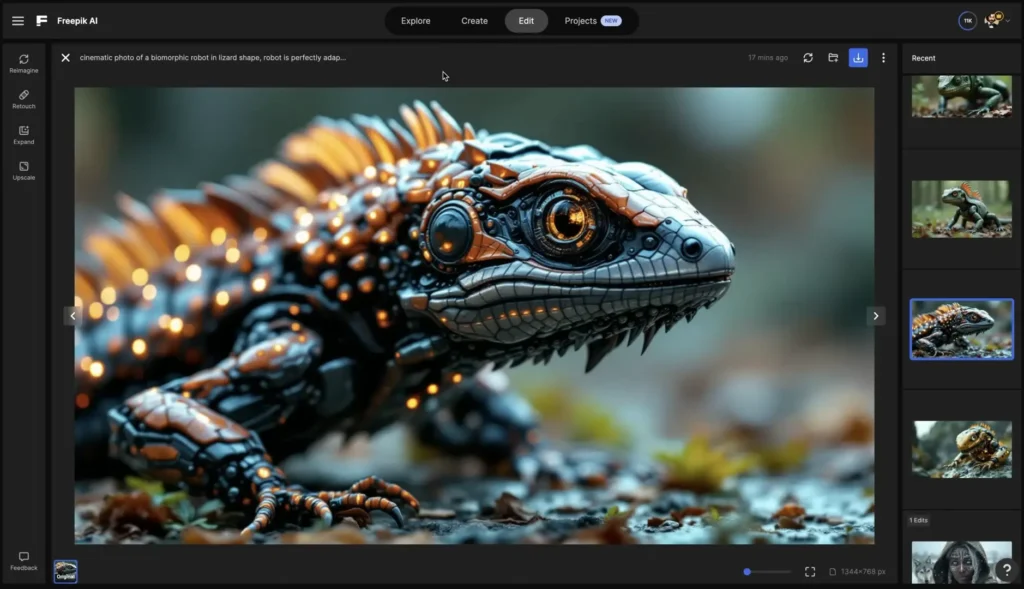
I decided to test the same prompt using FLUX 1.0. The difference was clear: the textures and details in FLUX 1.1 were far superior.
Even though FLUX 1.0 provided a decent result, the improvement in FLUX 1.1 was undeniable.
Creating Covers Art for Book using MidJourney
Detailed Comparison Overview:
Here’s a quick comparison table for FLUX 1.1 Pro, FLUX Lora, MidJourney V6.1 and Mystic V2:
| Criteria | FLUX 1.1 Pro | FLUX LORA | MidJourney V6.1 | Mystic V2 |
|---|---|---|---|---|
| Photo Realism | Excellent, realistic textures | Good, slightly less detailed | Struggles with skin realism | Best overall, highly detailed |
| Prompt Understanding | Good, slightly misses nuances | Better at distinguishing faces | Struggles with complex prompts | Decent, but needs improvement |
| Speed | 3x faster than Flux 1.0 | Fast, but slightly slower | Moderate speed | Fast |
| Cinematic Quality | Lacks cinematic feel | Lacks cinematic feel | Best in this category | Great cinematic output |
| Illustrative Art | Not designed for this | Average | Best for art and abstract | Close, but not as good as MJ |
| Accuracy of Details | Good, slight imperfections | Good, slight imperfections | Struggles with finer details | Best, but has minor issues |
| Cost | Affordable | Affordable | Premium pricing | Mid-range |
Prompt Understanding: FLUX 1.1 Pro vs. FLUX LORA vs. MidJourney V6.1 vs. Mystic V2
One of the first tests involved a simple but unique prompt: “Photo of a man carrying a horse on his shoulders.”
Here’s how the models handled it:
FLUX 1.1 Pro and FLUX LORA: Both models interpreted the prompt fairly literally but failed to capture the man “carrying” the horse. Instead, the horse was just placed close to the man’s shoulders.
MidJourney V6.1: The closest to what I envisioned. The man appeared to be carrying the horse, though it generated the image in black and white.

Mystic V2: Despite various tweaks to the realism and creative detailing settings, none of the Mystic V2 outputs fully captured the idea of a man carrying a horse.
For prompt understanding, MidJourney V6.1 was the closest, but none of the models fully nailed it.
Comparing Textures and Details
Another test involved a prompt describing two women in a cafe. The first woman was wearing a blue dress with a blueberry texture, while the second was dressed in an astronaut outfit.
FLUX 1.1 Pro: The model nailed the blueberry texture on the dress, interpreting it exactly as expected.
FLUX LORA: This model performed similarly but leaned more toward a blueberry “pattern” rather than a texture.
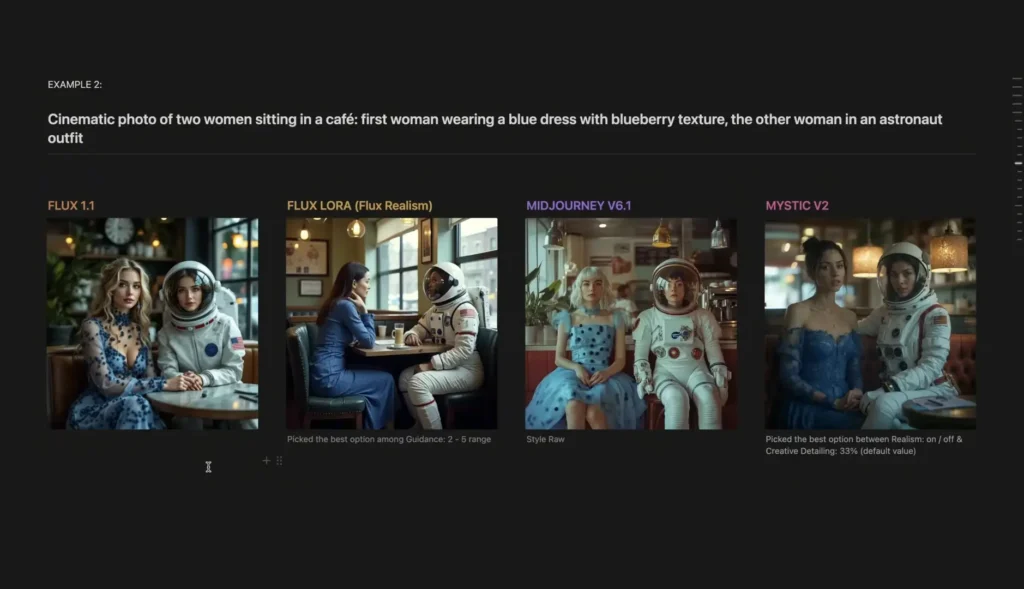
MidJourney V6.1: Similar to FLUX 1.1, it placed a blueberry texture on the dress.
Mystic V2: It treated the blueberries as more of a decorative pattern, not a texture.
Interestingly, FLUX 1.1 and FLUX LORA were the only models to differentiate between the two women, while MidJourney V6.1 and Mystic V2 presented them as having nearly identical faces.
Performance in Fashion Photography Prompts
A fashion-oriented prompt was next: “A man wearing a blue and purple polka-dotted t-shirt, a yellow hoodie, and a firefighter hat.”
FLUX 1.1 Pro: Delivered a solid result with all elements clearly represented.
MidJourney V6.1: Surprisingly struggled with this, failing to apply the polka dots and missing the firefighter hat entirely.
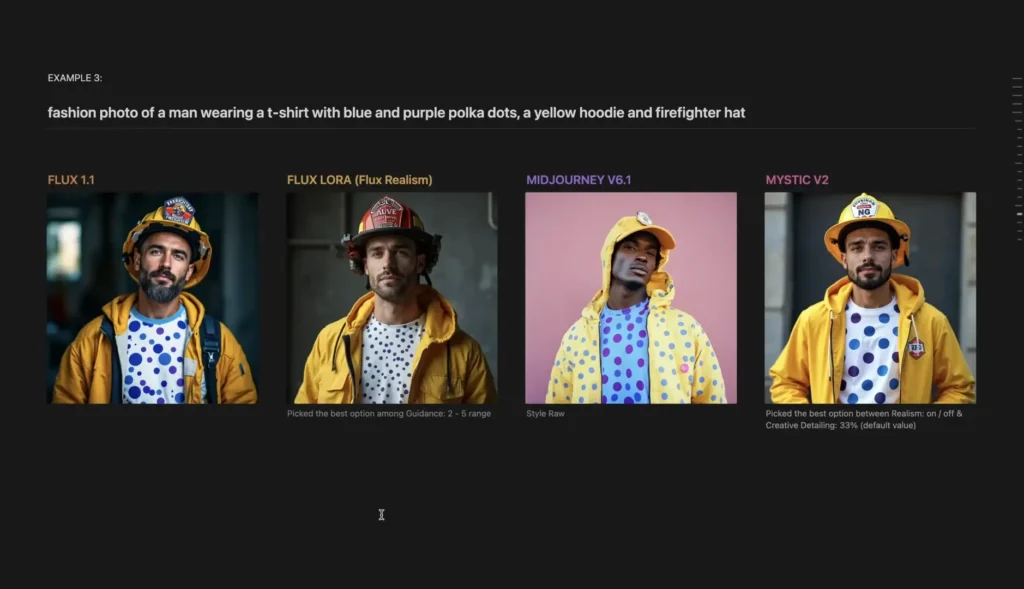
Mystic V2: Handled the task well, delivering a good balance of all elements.
Assessing Photo Realism
For this test, I used a prompt describing a hyperrealistic portrait of a tribal female warrior, adorned with intricate paint and feathers, gazing into the distance.
FLUX 1.1 Pro: Delivered an incredibly realistic result. The paint and feathers were detailed, and the overall composition was impressive, though the skin appeared slightly plastic.
MidJourney V6.1: Fell short. The skin lacked realism and appeared somewhat artificial.
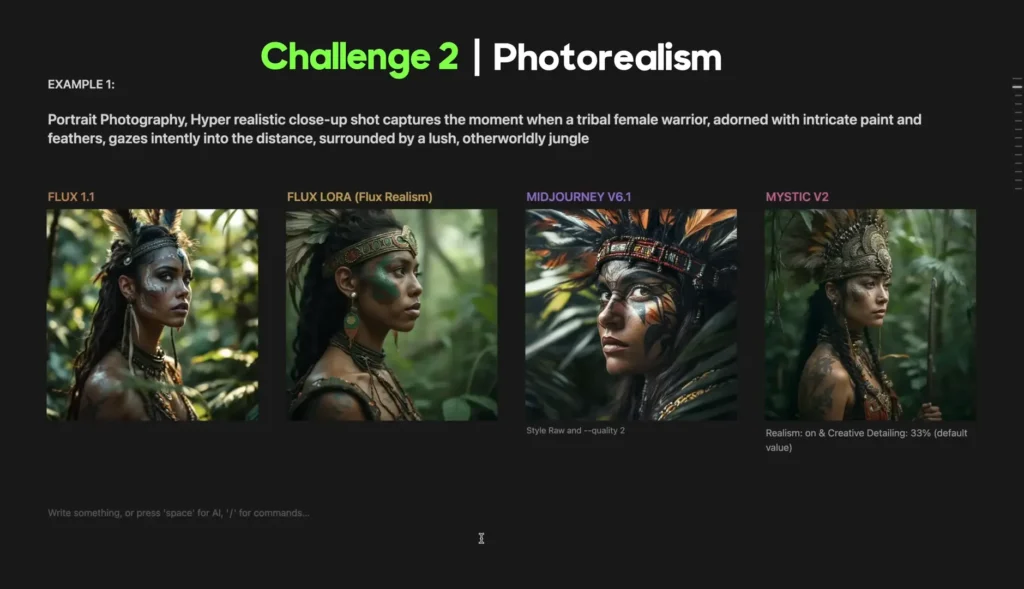
Mystic V2: The most realistic by far. Every detail, from the paint to the feathers, was immaculate, making Mystic V2 the clear winner for photo realism.
Accuracy of Details
I tested how each model handled intricate details using a challenging sports prompt: “Volleyball players mid-action, with a net and audience in the background.”
FLUX 1.1 Pro: Provided a good result, though there were minor issues with the players’ positions and facial anatomy.
MidJourney V6.1: Struggled with the net and player positions. The faces were a bit off, and the accuracy overall wasn’t ideal.

Mystic V2: Produced a visually stunning output, but there were subtle issues, such as missing fingers and slight body morphing.
Illustrative Art Style: Ink Fantasy Art
For this illustrative test, I used a more artistic prompt: “Ink-style fantasy art of a sci-fi woman in a tight space suit, holding a space ray gun while exploring a hostile alien planet.”
FLUX 1.1 Pro: While primarily built for photorealism, it performed surprisingly well, though the ink style wasn’t fully captured.
MidJourney V6: Delivered an exceptional result. The action pose and tight suit were on point, making it the standout in this category.
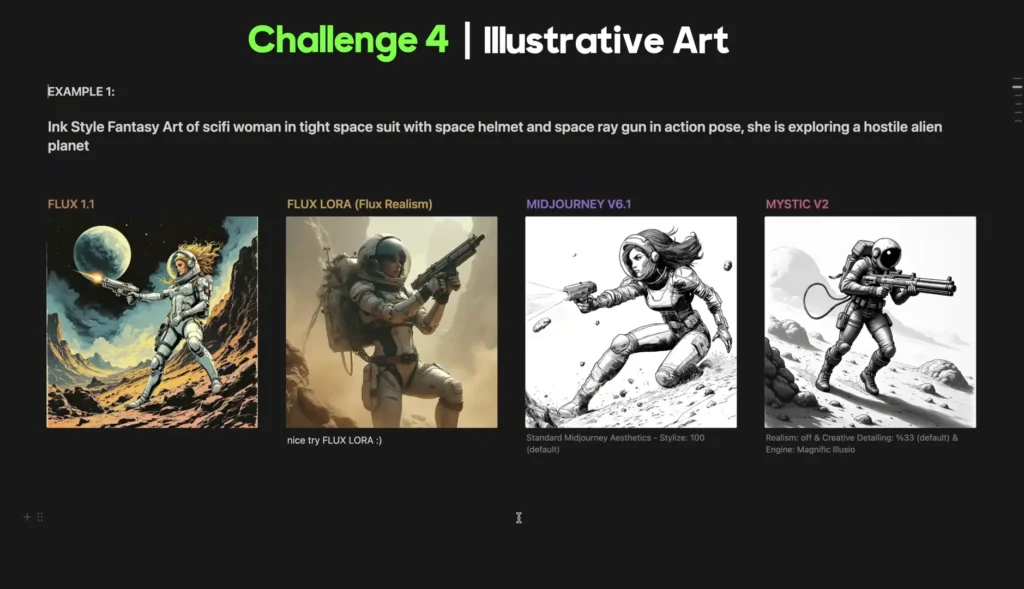
Mystic V2: Came close, but MidJourney V6.1 remained the top choice for illustrative art.
Conclusion: Which Model is the Best?
Each model has its strengths and weaknesses, and the choice largely depends on the type of work you’re aiming to create.
Prompt Understanding: MidJourney V6.1 came close to what I imagined but still has room for improvement. FLUX 1.1 Pro and FLUX LORA also performed well.
Photo Realism: Mystic V2 was the clear winner here, providing stunningly realistic outputs. FLUX 1.1 Pro was a close second.
Illustrative Art: MidJourney V6.1 dominated in this category, with its ink-style rendering of the sci-fi woman being nearly perfect.
Final Words:
As of now, if you’re looking for the most realistic images, Mystic V2 is your go-to. For more artistic or illustrative pieces, MidJourney V6.1 excels. FLUX 1.1 Pro and FLUX LORA offer a good balance between realism and speed, making them ideal for those seeking efficiency without compromising too much on quality.
In the future, it seems likely that different models will specialize even further. If you need photorealistic outputs, you’ll likely head towards FLUX or Mystic, while those focused on abstract or illustrative art will continue to use MidJourney.
